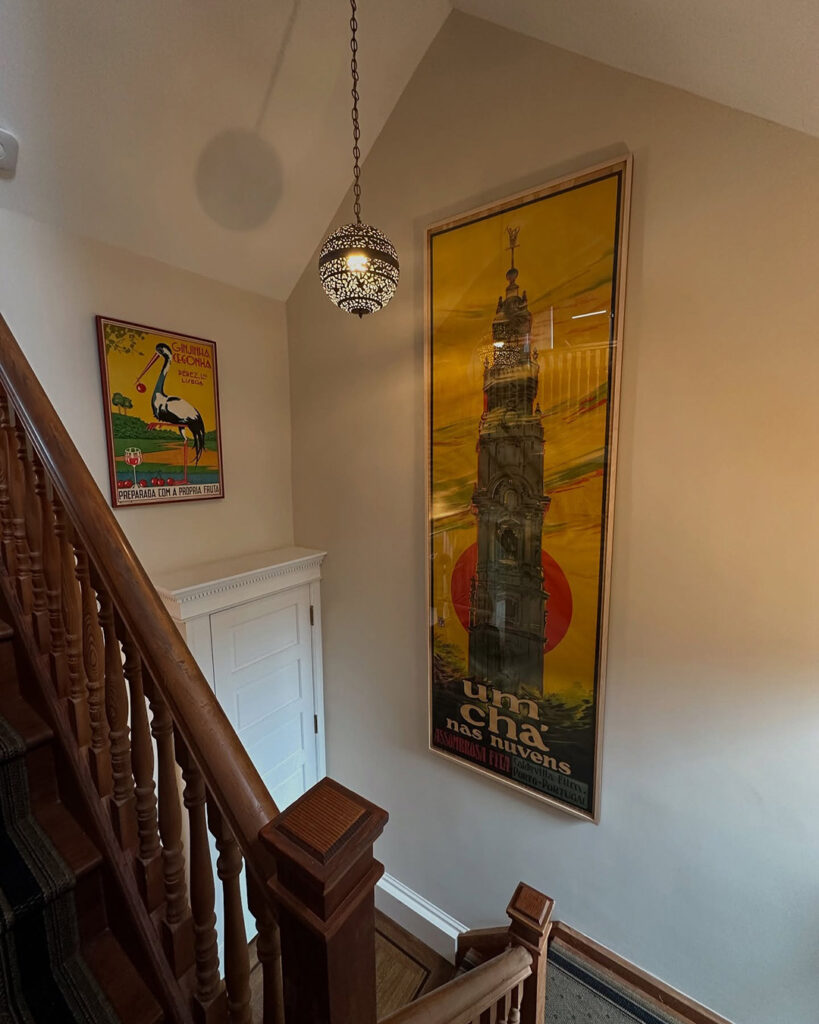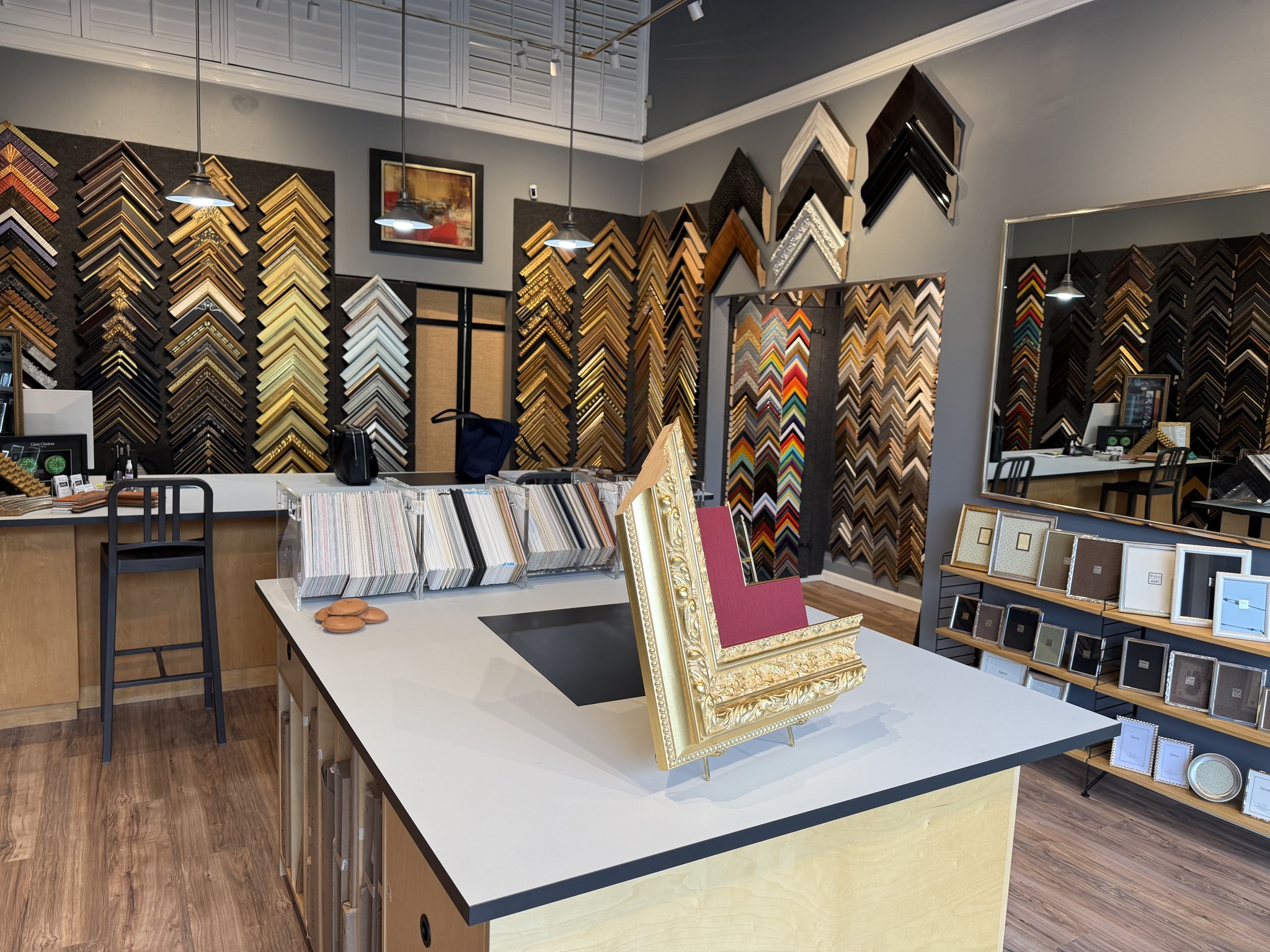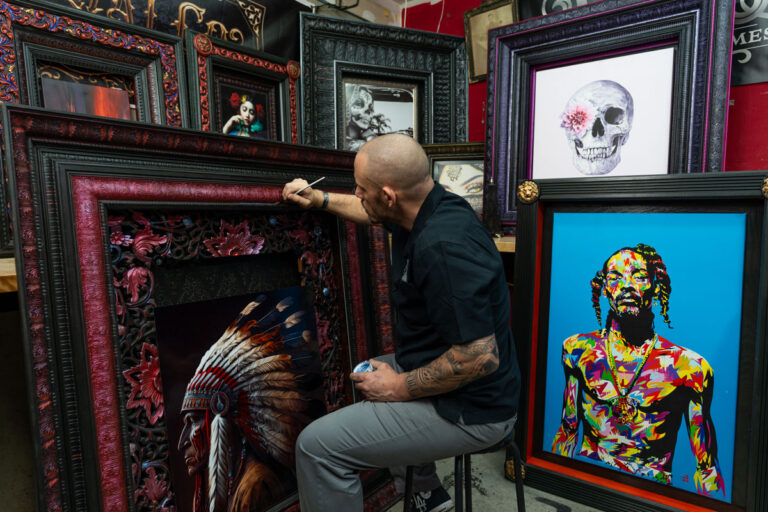Custom Framing as a Part of the Interior Design Canvas
The kind of Interior design that leaves an impression is created with attention to detail—the subtle choices that define the feel of a room. From the color palette and texture of a fabric to the reflection of light across a carefully chosen surface, interior designers understand that harmony is created through layers of intention. Yet one element sometimes sits quietly in the background, holding visual weight without always being recognized for its impact: the frame.
Custom framing is more than a finishing touch. It’s an integral part of the design composition. Like lighting, textiles, or millwork, a frame defines atmosphere, enhances spatial rhythm, and can even bridge different styles within a single environment. For interior designers and design trade professionals, thinking of custom framing as part of the design canvas itself opens up new creative and functional possibilities.

The Frame as an Interior Design Element, Not an Accessory
In many projects, art is sourced late in the process—after the walls are painted, the furnishings selected, and the finishes finalized. But what if the frame were considered earlier, as part of the palette that shapes the room?
Frames introduce material, color, proportion, and finish, just like furniture and architecture. A matte black maple float frame, for instance, can echo the steel lines of a window mullion or a modern lamp base. A warm-toned walnut frame can ground a neutral space and tie together natural textures. Antique gold leaf or silver frames lend depth and heritage to contemporary works, balancing the tension between old and new.
When used strategically, frames become a form of architectural punctuation—visual cues that help the eye navigate a space. They can emphasize a statement wall, align with the geometry of a fireplace, or create symmetry within an open floor plan. Framing, in essence, is spatial storytelling.
Craftsmanship and Material Synergy
Interior designers often speak the language of materials—linen, leather, glass, stone. Custom framers speak it, too. The collaboration between these two disciplines can produce remarkable synergy.
A skilled custom framer can mirror the tone or texture of interior finishes through specialized mouldings and matting. Raw oak, brushed aluminum, or linen-wrapped mats can all serve as subtle extensions of the materials used elsewhere in the room.
At Walter Adams Framing, designers frequently bring in fabric swatches, tile samples, or cabinet finishes to find that perfect complement or contrast. The process becomes collaborative—a dialogue between design intent and custom framing craftsmanship. This hands-on partnership ensures that the frame isn’t just “around” the art, but fully integrated into the room’s visual language.
Scale, Proportion, and Placement
Just as furniture must be scaled to a room, artwork and framing must be proportioned to the wall—and to the eye. An undersized frame can make even a large work appear insignificant, while an oversized one can overwhelm the space.
For interior designers, working with a custom framer provides the advantage of precision. Designers can specify sightlines, mat margins, and float spacing to achieve the desired balance. In multi-piece installations, custom framers can ensure consistent proportions and spacing for a cohesive look.
Placement also plays a crucial role. Custom framing allows flexibility in hanging systems and depth, ensuring that the art integrates seamlessly into architectural elements—above wainscoting, along stairways, or in gallery-style corridors. At Walter Adams Framing, we offer decades of expertise that ensures your artwork is displayed safely and beautifully. Art hanging services go beyond simply hammering a nail into the wall; they involve assessing the best locations for your pieces, considering factors like lighting, scale, and the overall aesthetic of the space. Thoughtful alignment and continuity in framing can make the difference between a wall that feels “decorated” and one that feels designed.

The Narrative Power of Custom Framing
Every interior tells a story, and the artwork within it often serves as the emotional anchor. Custom framing amplifies that narrative.
For example, consider a serene coastal residence with abstract landscapes—floated with subtle spacing inside white oak shadowbox frames. The result is airy, cohesive, and tactile, echoing the natural tones of the shoreline. Contrast that with a historic townhouse filled with bold contemporary prints in sleek lacquered black frames—modern edge meeting classic architecture.
Framing has the power to contextualize art within its environment, to reinforce the designer’s concept, and to express the client’s individuality. It’s not simply about presentation; it’s about storytelling through structure.
Framing as the Final Layer of Interior Design
In the same way a designer might layer textures through upholstery, rugs, and drapery, custom framing layers dimension onto the wall itself. It brings tactile warmth to flat surfaces and provides transitions between visual zones.
Think of a frame as both boundary and bridge: it delineates the artwork while harmonizing it with its surroundings. It can either disappear quietly into the composition or command attention as a sculptural statement. The choice depends on the designer’s vision—and the skill of the custom framer.
A Designer’s Canvas Expanded
As the role of art continues to evolve in modern interiors, so too should the role of custom framing. Whether curating a minimalist gallery wall, framing textiles and three-dimensional objects, or reimagining vintage pieces for a contemporary setting, designers who integrate custom framing early in their process expand their creative palette. The frame becomes another brushstroke on the canvas of interior design.
At Walter Adams Framing, we see ourselves as partners in that process—helping designers translate their aesthetic into form, texture, and finish.
Collaboration as Part of the Process
For interior designers, working with a custom framer early in the design process yields practical and creative benefits. Custom framing can influence wall colors, sightlines, and even lighting choices. It ensures that the art plan supports the overall interior design narrative rather than feeling appended at the end.
Interior designers can collaborate directly with our team at Walter Adams Framing to preview mouldings, matting, and layout options tailored to specific projects. We can also accommodate volume framing, delivery coordination, and on-site installation guidance—key considerations for design projects with multiple rooms or tight timelines.
Visit one of our custom picture framing locations in San Francisco or give us a call to get started.



